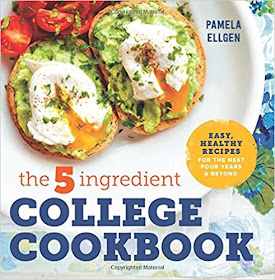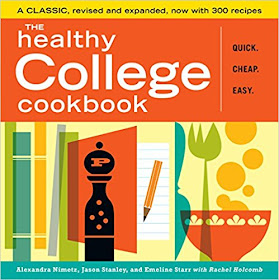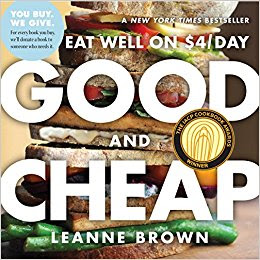If you are stressed because you don’t know how to cook and living away from your parents and siblings. You didn’t know what to cook for yourself and friends because you had never lived away from home before. Many college students feel this way.
College life is busy. College food has developed quite the culinary “reputation.” While the dining hall or fast-food takeout can be convenient, these shortcuts can take a toll on your maxed-out bank account or credit card, not to mention your waistline.
Most students don’t have the time, money, or space to make meals like mom used to, so words like fast, cheap, easy and microwavable have become synonymous with college eating.
There are many cookbooks written especially for college students and newbie cooks. But not all of them are created equal. If you try websites or apps that contain hundreds of recipes, many of which do not meet college student criteria.
Who says it has to cost more to eat well in college? What you need is some cheap, healthy, easy, fast, and delicious recipes. But there is a better way! Continue reading and easily find a solution from the best college cookbook list that can help solve your problem.
14) The Healthy Meal Prep Cookbook: Easy and Wholesome Meals to Cook, Prep, Grab, and Go by Toby Amidor
Master the art of meal preparation and serve up nutritious, ready-to-go meals every day of the week. Get more information please click here… The Healthy Meal Prep Cookbook
As a working mom and nutritionist, Toby Amidor knows how difficult it can be to carve out the time for healthy home cooking. Applying her 15 years of experience as a nutritionist, blogger, and recipe developer here in The Healthy Meal Prep Cookbook, Toby shares her tricks and tips to efficient and enjoyable meal preparation.
It’s easy to reach for frozen and microwavable meals when you’re short on time, but being too busy shouldn’t mean that you can’t have balanced and delicious meals. Learning how to meal prep properly will not only save you time and energy, but it will also help to make sure that you eat homemade and nutritious meals.
Providing practical and simple solutions with easy to follow instructions, The Healthy Meal Prep Cookbook shows you how simple it is to enjoy fresh and flavorful meals on even the most hectic days.
The Healthy Meal Prep Cookbook features:
a) More than 100 simple, wholesome recipes for breakfast, lunch, and dinner, complete with nutritional breakdowns and portion control to keep calories in check
b) Convenient illustrated guidelines on how to freeze, thaw, and reheat your meals to keep food fresh, safe, and tasty
c) 3 flexible 2-week meal plans for ready-to-go healthy meals without the hassle of preparation
d) Practical weekly shopping lists with easy to find ingredients to prepare your pantry for the week
13) Ultimate Dining Hall Hacks: Create Extraordinary Dishes from the Ordinary Ingredients in Your College Meal Plan by Priya Krishna
Get more information just click or tap here now… Ultimate Dining Hall Hacks
Transform your dining hall meals into gourmet feasts! Ultimate Dining Hall Hacks offers 75 amazing and creative recipe ideas that use items readily available in your college dining hall. Enjoy creamy eggs carbonara or a mango parfait for breakfast, dine on tzatziki chicken salad or lemon-pepper pasta any night of the week, and create custom desserts like peach cobbler and chocolate bread pudding.
Discover a wide variety of inventively delectable options as you make the most of your college meal plan.
I think this book might help see a new student through a few years of cafeteria food, it might also teach them how to be a little creative and, dare I say, resourceful in the dorm, frat or sorority kitchen once they’re on their own.
12) Eating Well on a Budget: 140 Delicious, Healthy, Affordable Recipes: Amazing Meals for Less Than $3 a Serving by Jessie Price and the Editors of Eating Well
You can download the book on your tablet or phone; just tap here, Eating Well on a Budget
College students are eating out less and, more and more often, their food decisions are being driven by two main things: budget and health. EatingWell marries these two trends in the new cookbook EatingWell on a Budget.
It shows you how to make nutritious dinners that everyone will love and get them on the table quickly without spending more?in most instances?than $3 a person.
The book cost out the ingredients, tell readers how to get the most nutrition bang for their buck, and even show them where to splurge and where to save.
The editors of EatingWell don’t believe in sacrificing taste, so the recipes in this book include foods like steak and shrimp but, because it was used judiciously, they are still affordable.
An introductory section includes the basics of healthy cooking on a budget and offer lots of tips and advice on menu planning, stocking your pantry, and nutrition basics. There are also great suggestions for how you can save and reuse left-over, preserve foods, and use one ingredient in multiple fresh new recipes with 75+ color photographs.
11) Good Cheap Eats Dinner in 30 Minutes or Less: Fresh, Fast, and Flavorful Home-Cooked Meals, with More Than 200 Recipes by Jessica Fisher
Try a sample recipe; click to download here, Good Cheap Eats Dinner in 30 Minutes or Less
In over 200 recipes, Jessica Fisher shows time-pressed cooks how they can eat remarkably well without breaking the bank. Good Cheap Eats serves up 65 two-course dinners, consisting of a main dish and a substantial side, salad, or soup, all of which take 30 minutes or less to prepare.
Jessica's two-course pairings are artfully conceived and perfectly complementary. And as a mother of six and a busy parent, she shows home cooks how to get dinner on the table quickly and inexpensively without relying on heavily processed shortcuts or artificial ingredients.
Great for time-pressed students, families with picky eaters, or singles that need a quick solution to dinner tonight.
10) The Quick and Easy College Cookbook: 300 Healthy, Low-Cost Meals that Fit Your Budget and Schedule by Adams Media
Download the eBook; click the link… The Quick and Easy College Cookbook
The best part? No experience or fully equipped kitchen required! You'll find 300 recipes that range from hearty breakfasts to healthy study-session snacks to fuel an all-nighter.
Even first-time cooks will succeed, with the help of a glossary of cooking terms and checklists of essential kitchen equipment and pantry staples. This cookbook is should be required reading for any college student who likes healthy home cooking.
9) PETA'S Vegan College Cookbook: 275 Easy, Cheap, and Delicious Recipes to Keep You Vegan at School by PETA
Get more info about this book at, PETA'S Vegan College Cookbook
You can have the simplest, tastiest vegan recipes on a budget ? and the best part is, the most complicated kitchenware you'll ever need is a microwave. Including more than 250 recipes, the book got all the actionable insider info:
a) Unbelievable vegetarian dessert recipes
b) How to make meat-free sandwiches, salads, soups, and sauces
c) Vegan alternatives to eggs, milk and meat
d) The best drinks, dips, and dressings
e) Spotlight sections on the staples we love: peanut butter, potatoes and Ramen
f) How to stock your kitchen/mini-fridge
With new tips and treats to suit even the pickiest palate, this is the essential college cookbook for every vegetarian or vegan on a budget.
Remember that you have the power to save animals-every time you eat. PETA can show you how.
Related Post: 26 Best Vegetarian Diet Cookbooks of All Time
8) Student's Vegetarian Cookbook, Revised: Quick, Easy, Cheap, and Tasty Vegetarian Recipes by Carole Raymond
If you are a vegetarian or you like veggies once in a while, this book is for you. Get it now at, Student's Vegetarian Cookbook, Revised
Ideal for students, but just as valuable for health-, time- and budget-conscious grown-ups, Raymond's updated cookbook offers 142 quick and easy recipes for all kinds of vegetarian delights, including breakfasts, salads, sandwiches, pastas and stir fries. The recipes draw on various cuisines.
With the knowledge of a nutritionist and the warmth of a mom, Raymond urges her readers to embrace meatless cooking for its ease, its economy and its benefits for both people and the environment.
For those new to vegetarianism, she covers techniques for smart shopping and kitchen tricks; for the truly harried, her 10 "No-Time-to-Cook" recipes prove that a decent and healthy meal can be whipped up sooner than you can say "Pizza to go."
Raymond also offers vegetarian recipes, drinks and desserts. With readily available ingredients, prep times that never exceed 20 minutes (and that are often in the single digits) and directions that rarely call for any appliance more complicated than a blender, this volume should be required reading for any student vegetarian.
With vegetarian eating on the rise and with more young adults adopting this lifestyle, Student's Vegetarian Cookbook provides the means for developing healthy, low-fat meals that are quick, easy, and inexpensive to prepare. This cookbook includes a wealth of new and updated recipes, new health information including food source charts, and a new section of resources.
This book also include savvy tips for grocery shopping and how to choose produce, simple cooking techniques (and new pointers), and a chapter on shortcut recipes.
7) The $5 a Meal College Vegetarian Cookbook: Good, Cheap Vegetarian Recipes for When You Need to Eat (Everything Books) by Nicole Cormier
Download this book at… The $5 a Meal College Vegetarian Cookbook
Tired of your dining hall's sorry excuse for a vegetarian meal? Can't afford to spend all your money on mediocre takeout? Well, now you can enjoy hundreds of delicious, meat-free dishes that will not only satisfy your cravings but your wallet, too!
Whether you need an energy-boosting breakfast, a cram-session snack, or a date-night entree, you will get the most out of your meals--and budget--with The $5 a Meal College Vegetarian Cookbook.
The $5 a Meal College Vegetarian Cookbook makes it easy to create satisfying vegetarian dishes you'll actually want to eat.
Featuring simple instructions and more than 300 tasty recipes, this book provides you with a variety of meat-free meals that will keep you full throughout the day. Best of all, each dish will only cost you no more than $5, so you'll never have to worry about breaking the bank when you create soon-to-be favorites.
6) The 5-Ingredient College Cookbook: Easy, Healthy Recipes for the Next Four Years and Beyond by Pamela Ellgen
Take a peek at the included recipes in the book; click here… The 5-Ingredient College Cookbook
With The 5-Ingredient College Cookbook, you can cook simple, delicious meals on the tightest of budgets and in the smallest of spaces.
By sticking to 5 easy-to-find main ingredients per recipe, The 5-Ingredient College Cookbook makes it easier than ever for students to cook tasty, high quality, healthy food for themselves.
NO EXPERIENCE? Helpful illustrations demonstrate how to prepare common produce and even how to properly use a knife
NO TIME? Tried and true, these college cookbook recipes take 30 minutes or less from beginning to “yum!”
NO MONEY? Each recipe in this college cookbook calls for no more than 5 main, affordable, tasty ingredients
NO PROBLEM! 100+ of the most popular, student-approved recipes in this college cookbook include 3 variations to keep each one interesting time and time again
Don’t head to the cafeteria for overpriced soggy waffles or “controversial” mystery meat. With just 5 ingredients and 30 minutes you can enjoy any one of the delicious, college student favorites in this college cookbook.
5) Cooking Through College: When You Can't Stand Instant Noodles Another Day Perfect by Chelsea Jackson and A. N. Gephart
Get it now at… Cooking Through College
Tired of late-night popcorn stomach aches and greasy Chinese take-out stains on your bargain duvet? Stop wasting your money on cheap junk food and start investing it in delicious meals that won't break your budget or disappoint your taste buds. Perfect for college students of all ages, these quick-and-easy recipes will satisfy your cravings in no time at all.
4) The Ultimate Student Cookbook: From Chicken to Chili by Tiffany Goodall
Want to know more? Follow the link… The Ultimate Student Cookbook
At first glance, you might not think that this belongs in a "healthy cookbook" list. Written by a chef who lived away from home on a limited budget while she was a culinary arts student, “The Ultimate Student Cookbook “enables college and university students to enjoy fresh and healthy food every day.
More than 100 easy recipes for terrific food on a student's budget. The recipes included use real-food, economical ingredients that any college student could find and afford, making it easy to cooking your apartment, a dorm or frat house and sorority house.
Recognizing the pressures and realities of student life, these more than 100 delicious recipes:
a) Call for healthy, inexpensive ingredients available at any grocery store
b) Are complemented by step-by-step color photographs that show the preparation and presentation of each dish
c) Use fewer than 20 staples from the cupboard
d) Require only 20 essential pieces of kitchen equipment
e) Include important guidelines on how to store food and observe good food hygiene
f) Use up leftovers and include various adaptations
It's got tons of super-simple how-to photos and dialogue "balloons" for every dish so even the most novice cook can follow along and not be intimidated. When students learn how easy and cheap it is to cook good food at any kitchen that translates into better health for them and less money for fast-food joints.
3) The Healthy College Cookbook by Alexandra Nimetz, Jason Stanley, Emeline Starr and Rachel Holcomb
Download the book; just click… The Healthy College Cookbook
If the pizza-delivery guy is in your apartment more often than your roommate, The Healthy College Cookbook is exactly what you need. Whether you’re a meat lover, vegetarian, or vegan, you’ll find simple and adaptable recipes for quick breakfasts, portable snacks, fresh lunches, and satisfying dinners. Busy students will love these tasty, nutritious recipes.
2) Budget Bytes: Over 100 Easy, Delicious Recipes to Slash Your Grocery Bill in Half by Beth Moncel
Get more information just click here now… Budget Bytes: Over 100 Easy, Delicious Recipes to Slash Your Grocery Bill in Half
The debut cookbook from the Saveur blog award-winning Internet expert on making eating cheap dependably delicious.
Quick and delicious recipes, easy-to-follow instruction, and priceless cost-cutting tips from the queen of eating well on a dime. A great easy cookbook for students and beginner cooks.
As a college grad during the recent great recession, Beth Moncel found herself, like so many others, broke. Unwilling to sacrifice eating healthy and well—and armed with a degree in nutritional science—Beth began tracking her costs with obsessive precision, and soon cut her grocery bill in half. Eager to share her tips and recipes, she launched her blog, Budget Bytes.
Beth's cookbook proves cutting back on cost does not mean cutting back on taste. Budget Bytes has more than 100 simple, healthy, and delicious recipes.
It also contains expert principles for saving in the kitchen—including how to combine inexpensive ingredients with expensive to ensure that you can still have that steak you’re craving, and information to help anyone get acquainted with his or her kitchen and get maximum use out of the freezer. Whether you’re urban or rural, vegan or paleo, Budget Bytes is guaranteed to delight both the palate and your wallet.
1) Good and Cheap: Eat Well on $4/Day by Leanne Brown
Get more information please click here… Good and Cheap: Eat Well on $4/Day
By showing that kitchen skill, and not budget, is the key to great food, Good and Cheap will help you eat well—really well—on the strictest of budgets.
Created for people who have to watch every dollar—but particularly those living on the U.S. food stamp allotment of $4.00 a day—Good and Cheap is a cookbook filled with delicious, healthful recipes backed by ideas that will make everyone who uses it a better cook.
The cookbook has more than 100 recipes maximize every ingredient and teach economical cooking methods. There are recipes for breakfasts, soups and salads, lunches, snacks, big batch meals—and even tasty desserts.
Plus there are tips on shopping smartly and the minimal equipment needed to cook successfully.
Kale is nutritious and good for you. Read this… How to Eat Kale? Try These 15 Fast and Simple Kale Salad Recipes
What Are The Criteria for Selecting and Ranking The College Cookbooks?
The verifiable metrics used in selecting the cookbooks are:
a) Affordability of the ingredients or recipes
b) The recipes must be healthy and nutritious
c) Recipes are easy and fast to cook (between 30 to 35 minutes or less)
d) Excellent layout and lots of food photos in the book
e) New and helpful food hacks or tips
Methodology for Selection and Ranking
1) The “best college cookbooks” were rated by sampling and testing the recipes (snacks/dessert, breakfast, lunch and dinner recipes).
2) My friend, a data science enthusiast helped me with organizing the list. He conducted a meta-analysis of big data from Google search results and book reviews from Amazon.com, Goodreads and EatYourBooks.
3) He also utilized data from social media which include Facebook (e.g. Facebook likes), Instagram, Pinterest, Twitter, Reddit, Tumblr, Linkedin and Google Plus
4) Fakespot.com was used to analyze and identify fake reviews eliminating paid positive and negative book reviews (negative campaigning).
To make you cook handy and faster. I think you need the right equipment like an electric pressure cooker. Read this now… The Complete Electric Pressure Cooker Buying Guide: How to Choose the Right Pressure Cooker?















